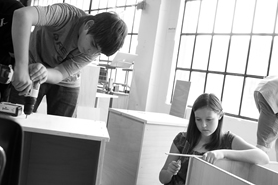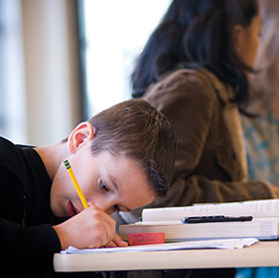

October 30, 2022
From Community to Society
The Montessori adolescent program is the culmination of the child’s experience as a Montessori student. More and more Montessori schools are offering this unique program as it is designed to meet and serve the needs of children during this period of tremendous personal growth and change.
A Montessori Adolescent Program, for the 12-18-year-old, is built on the foundations of the elementary.
Students are expected to bring a high level of independence and self-direction, comfort with collaborative work, and a love of learning for learning’s sake. They treat each other with respect and are comfortable with the knowledge that each person has different strengths and challenges. The manipulative materials of the elementary level are rarely present, as adolescents have moved beyond their applications and are now solidly comfortable with the more adult learning techniques of reading, discussion, and application to a task.

It is designed to respond to the sensitivities of this age: personal dignity, social justice, and belonging.
The positive sense of belonging is nurtured through weekly council meetings run by the students, responsibilities that adequately match the capabilities of the adolescent, and through work that has a clear purpose. The adolescents work side-by-side with an increased number of adults, to engage in the immediate needs of the community: chores of dishwashing and sweeping, weeding the garden, feeding the animals, doing volunteer work at the neighborhood shelter, writing letters to representatives, etc. In response to their stronger need for belonging and a growing ability to collaborate within a large group, the adolescents have a schedule for the day and work within the same curriculum area at the same time. Each person is expected to contribute his best efforts to the topic or task at hand. Some adolescent programs utilize a boarding component to thoroughly immerse the students in this type of environment.
Students continue to be agents of their own learning.
Montessori adolescents continue to learn without letter grades or gold stars. Conversations with the teachers and written remarks on paper complement the most important barometer of success: the student’s own knowledge that he has put forth his best effort. The mixed-age class supports each student in applying himself in a unique way to a group experience. Longer blocks of time each day for subject areas such as Humanities, Occupations/Sciences, and Creative Expression allow enough time for each student to follow personal threads of interest without interruption.
The adolescent curriculum is “society” and relates to the needs of the particular community.
While traditional education often teaches facts that are isolated from life outside the classroom, the Montessori adolescent program offers lessons with practical applications that allow students to make improvements in that community. “What will I use this for?” is an often-asked question of the adolescent, as he is determined to use knowledge to DO something in the world. Projects such as monitoring the neighborhood watershed, building and maintaining a large garden, or baking bread, are real-world opportunities for many lessons in science, language arts, and practical life skills. Students work as a group to find ways of making money, their first direct experiences of the economic connections in society. The success of earning money for a job well-done is a strong source of validation for the adolescent’s skills and contributions.